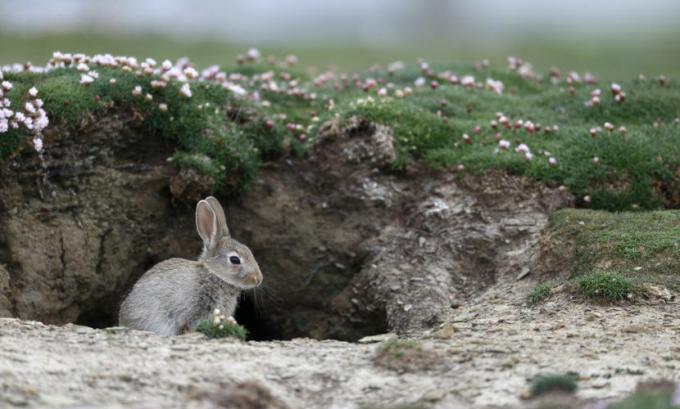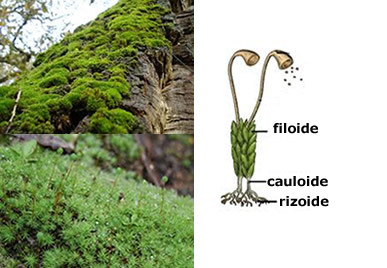Bunny It's an animal mammal which belongs to the order Lagomorpha and family Leporidae. Unlike what many people think, rabbits are not rodents,as they are not part of the Rodentia order. In the family Leporidae, in addition to rabbits, animals known as hares are included, which have larger ears and longer legs than rabbits.
Rabbits vary widely in size and color. They are herbivorous animals and are usually preyed on by a variety of animals such as owls and some cats.
Read too: Owls - birds with keen eyesight
Summary about rabbits
Rabbits are mammals belonging to the order Lagomorpha and family Leporidae.
Leporidae are animals that vary greatly in terms of weight, size and coat color.
They are herbivorous animals.
They have long ears and legs.
They have great reproductive capacity.
Baby rabbits are born hairless and with their eyes closed.
Family Leporidae — the family of rabbits
Coelho is the name given to different species belonging to the order Lagomorpha and family Leporiadae. In the family Leporiadae, in addition to rabbits, the hares are also included.
, which are usually larger than rabbits.Leporids are animals that vary greatly in relation to their weight. While some species weigh around 300 grams, others can reach 5 kg. The length of these animals is about 250 to 700 cm, being females generally larger than males. Leporids have a tail that varies between 1.5 cm and 12 cm.
As well as size and weight, the coat color of leporids is also variable. In addition to the variation found from one species to another, there is also variation because of the seasons in the same species. In general, the coat can have variations, going through black, reddish brown and white. Habitat also influences the coat color of these animals.
Some leporids are social, while others are solitary, forming groups just for mating. Individuals from this family can be found in a wide variety of habitats, from deserts even forest environments.
Leporids are herbivorous animals that feed on grasses, fruitOs, seeds, roots and even tree bark. For a long time they were considered pests, as they were responsible for great damage to crops due to their great appetite.
Characteristics of rabbits
Rabbits are mammalian animals that have their bodies covered with hair. The hair color varies from one species to another. An hallmark of these animals is the presence of ears andlegs long. Rabbits' legs, however, are shorter and the musculature more compact than that of hares.
Rabbits are less efficient runners than hares and, to escape predators, they resort to hiding in holes. While hares are capable of running long distances, rabbits run in short bursts. The ears, although long, are also smaller than those of hares.

There are different species of rabbits, which inhabit different regions.. Generally speaking, rabbits live in environments where there is dense vegetation and which allow these animals to hide among plants or in burrows. Some species of rabbit dig their own burrows; others, however, use only natural cavities and burrows left by other animals.
Sexual maturity in rabbits occurs between three and nine months after birth. Rabbits stand out for their great reproductive capacity, with females being able to have several litters during a single year. After birth, puppies still need adults to feed and move around. These animals are born hairless and with their eyes closed. They can see only a few days after birth.
Read more:Sexual reproduction — generator of genetic variability
rabbit species
As stated earlier, the term rabbit is not just used to refer to a single species. Next, we'll learn more about some species of rabbit: the European rabbit, the pygmy rabbit and the tapeti.
european rabbit
The European Rabbit (Oryctolagus cuniculus) weighs between 1.5 and 2.5 kg and can be about 50 cm long. Generally, this species has a grayish coat with brown and black spots around the body. The lower part of the body is lighter in color, and the lower part of the tail is white.
This species is able to reproduce throughout the year, however, generally, the greatest reproductive activity is observed in the first semester. Your pregnancy lasts, on average, a month, and the females give à light about five The six puppies.
Puppies are born very helpless, hairless and blind. They remain in burrows, and the mother only visits them for a few minutes during the day. During this visit, she breastfeeds the puppies with nutrient-rich milk.
European rabbits live an average of nine years, but the mortality rate is high in the first year of life. Bobcats and eagles are predators of this animal. The species is currently classified by the IUCN as “in danger”.
It is important to note that the European rabbit stands out for being the ancestor of all domestic rabbits. The color and size of domesticated rabbits vary greatly.
pygmy rabbit

The pygmy rabbit (Brachylagus idahoensis) is a species of rabbit found in the United States and stands out for being the smallest species of rabbit in North America. They weigh between 246 and 462 grams and are 23.5 to 29.5 cm long.
Its coat varies from brown to dark gray, with white at the edges of the ears. They Thefeed mainly on mugwort. The pygmy rabbit is a kind of rabbit that digs its own burrow, but it can also use burrows from other animals or natural cavities.
Little is known about the reproductive habits of these rabbits. The species is currently classified by the IUCN as “Least Concern”.
See too: Herbivorous animals — beings that feed on vegetables and/or algae
carpet

the rug (Sylvilagus brasiliensis), also known ashare or wild rabbit, is a species present from Mexico to Argentina. It is found occupying forest and field regions, being typical of transitional habitats, between woodland and open areas or edges of watercourses.
These animals feed on seeds, leaves, roots and fruits and have twilight and night habits. They are usually found alone or in pairs. The typical coat is yellowish-brown, but variations may occur.
The tapeti has an average body weight between 700 g and 1 kg. Their gestation period is about 30 days (some authors claim that gestation lasts between 42 and 45 days), and their litter is considered small, with the female usually giving birth to two offspring. The species is currently classified by the IUCN as "in danger".



